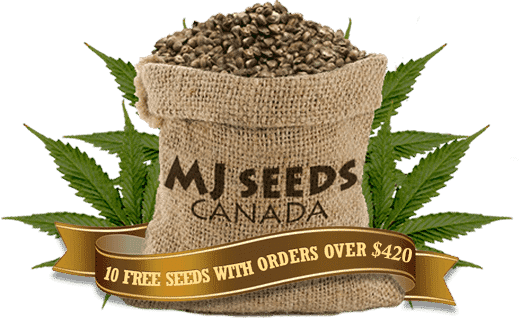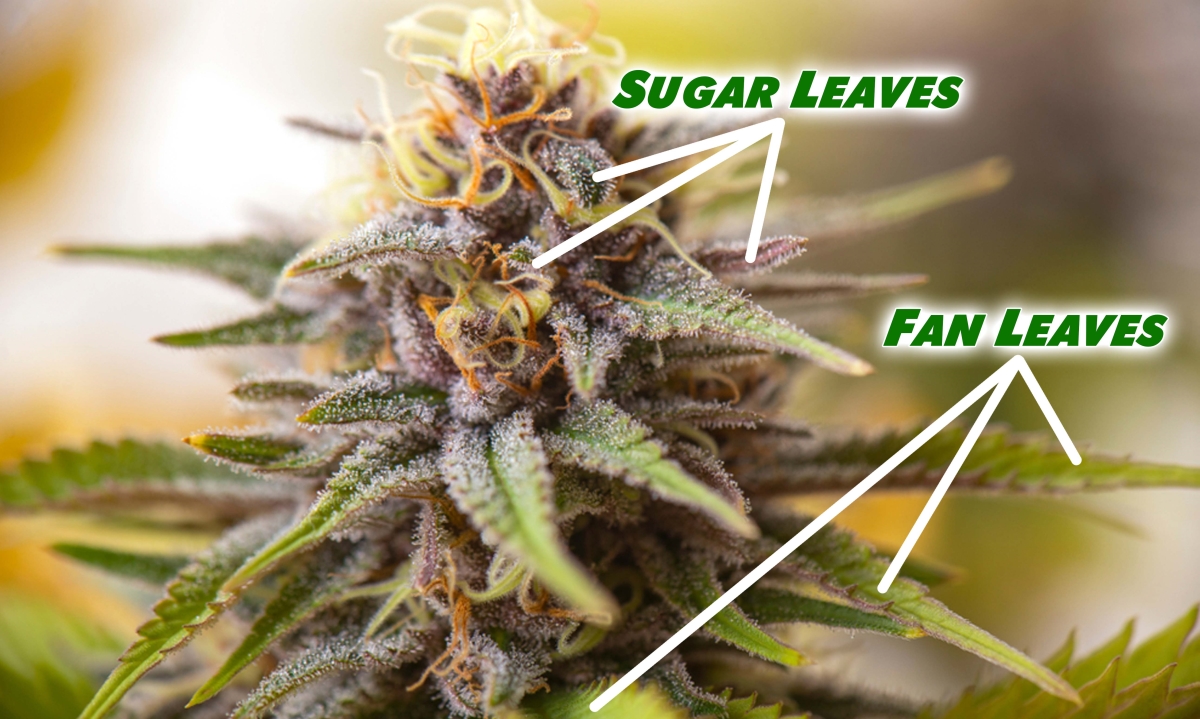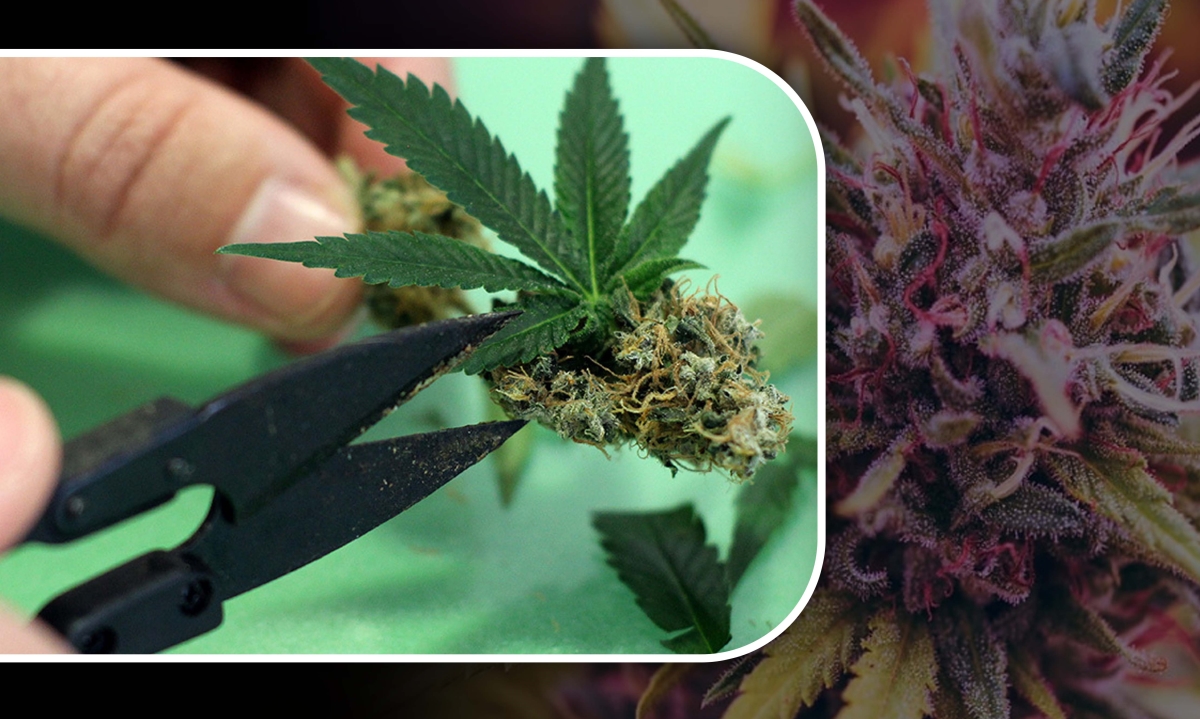Beyond their humble appearance, sugar leaves have a lot of potential in the cannabis cultivation field but are often overlooked. These foliage-rich extensions are important to the lifecycle of the cannabis plant, even though they may not have as many trichomes as their more renowned relatives. By recognizing and harnessing the potential of these often-overlooked leaves, we can unlock new dimensions of flavor, aroma, and potency in the cannabis experience. In this article, we delve into the world of sugar leaves, exploring their characteristics, functions, and the myriad ways they can be utilized.
Table of Contents
Understanding Sugar Leaves
Fan Leaves vs Sugar Leaves
Fan Leaves
Sugar Leaves
The Role of Sugar Leaves in Photosynthesis
Can You Smoke Sugar Leaves?
Characteristics of Sugar Leaves
Can I Trim Sugar Leaves?
Utilizing Sugar Leaves
Edibles
Topicals
Tinctures
Hash and Concentrates
Conclusion
FAQs
Understanding Sugar Leaves
Sugar leaves are characterized by their serrated edges and abundance of foliage, and are an integral part of the cannabis plant. Unlike fan leaves, which are larger and more prominent, sugar leaves typically grow closer to the buds and are adorned with trichomes, albeit in smaller quantities. The plant uses these leaves as its main location for photosynthesis, which is the process by which light energy is absorbed and transformed into nutrition.
Fan Leaves vs Sugar Leaves
When it comes to cannabis cultivation, understanding the anatomy of the plant is crucial for maximizing yields and potency. Two types of leaves play significant roles in this process: fan leaves and sugar leaves. Each type serves distinct functions and possesses unique characteristics that contribute to the growth and development of the plant.
Fan Leaves
Fan leaves also known as primary leaves, are the large, iconic leaves that emerge from the main stem of the cannabis plant. The name refers to the broad, fan-shaped leaves that these plants usually have. Because they transform light energy into chemical energy, which powers plant development, they are essential for the process of photosynthesis.
One of the distinguishing features of fan leaves is their position on the plant. They are generally located along the major branches and at the top of the plant. Given their size and strategic positioning, fan leaves play a vital role in capturing sunlight and optimizing the plant’s access to light.
Although fan leaves play a crucial role in photosynthesis, their cannabinoid and terpene levels are comparatively modest compared to other plant parts. Consequently, they are not usually collected for consumption. Nonetheless, during the vegetative phase, they retain value in overseeing the plant’s well-being and detecting potential nutrient deficiencies or pest infestations.
Sugar Leaves
Sugar leaves are smaller leaves that grow in and around the flowers, or buds, of the cannabis plant. These leaves are characterized by their abundance of trichomes, the tiny resin glands that produce cannabinoids, terpenes, and other compounds responsible for the plant’s effects and aroma.
The name “sugar leaves” stems from the sparkling appearance they develop due to the dense concentration of trichomes. These trichomes contain high levels of cannabinoids such as THC and CBD, making sugar leaves a valuable component of the cannabis plant for both recreational and medicinal purposes.
During the flowering stage, cannabis sugar leaves become coated in resin as the plant matures, contributing to the overall potency and quality of the buds. While some growers trim sugar leaves away from the buds for aesthetic purposes, others choose to leave them intact, especially if they plan to use them for extraction or other forms of processing.
The Role of Sugar Leaves in Photosynthesis
Photosynthesis is the process by which plants convert light energy into chemical energy, which is essential for the growth and survival of all plant species. Sugar leaves play a crucial role in this process, serving as the primary site for photosynthetic activity. Equipped with chloroplasts containing chlorophyll pigments, sugar leaves harness sunlight to produce glucose, the primary source of energy for plants. Through the intricate interplay of light, water, and carbon dioxide, sugar leaves facilitate the synthesis of sugars, which are subsequently utilized for cellular respiration, growth, and reproduction.
Can You Smoke Sugar Leaves?
Yes, once sugar leaves have been properly dried, they can indeed be smoked. However, it’s important to note that they may impart a harsher smoking experience and offer relatively lower potency compared to the buds. Additionally, their flavor profile tends to be less pronounced. While smoking sugar leaves is an option, there are more preferable methods of utilization available.
Smoking sugar leaf cannabis can offer a milder high compared to smoking buds, which may be preferable for individuals seeking a more subtle or functional experience. The lower cannabinoid content in sugar leaves means users can enjoy the therapeutic benefits of cannabis without becoming overly intoxicated, making it suitable for daytime use or social situations where a clear head is desired.
Whether smoking sugar leaves is a good idea ultimately depends on personal preferences and situational factors. However, it’s evident that sugar leaves have benefits beyond smoking and should be used appropriately given their availability and other purposes.
Characteristics of Sugar Leaves
Sugar leaves possess several unique characteristics that make them indispensable in cannabis cultivation. From their trichome density to their aroma and flavor profile, these leaves play a vital role in determining the quality and potency of the final product. Growers can create a wide range of outstanding cannabis products by comprehending and utilizing the characteristics of sugar leaves.
Trichome Density
These tiny, resinous glands cover the surface of the leaves, giving them a frosty, crystalline appearance. Trichomes are rich in cannabinoids and terpenes, the compounds responsible for the aroma, flavor, and effects of cannabis. Sugar leaves often boast a higher concentration of trichomes compared to fan leaves, making them valuable for extraction purposes.
Size and Shape
Sugar leaves vary in size and shape depending on their position on the plant. Those closer to the buds tend to be smaller and more densely packed, while those farther down the stem may be larger with broader serrations. Their serrated edges facilitate photosynthesis, allowing the plant to produce energy efficiently. Additionally, the shape of sugar leaves can provide insights into the genetics of the plant, with certain strains exhibiting distinct leaf structures.
Coloration
Throughout the growth cycle, sugar leaves change coloration, signaling different stages of maturity. In the vegetative stage, they are typically vibrant green, indicating robust growth and nutrient uptake. As the plant transitions to the flowering stage, sugar leaves may develop hues of purple, red, or orange, adding visual appeal to the plant. Towards the end of the flowering phase, as the plant reaches maturity, sugar leaves may start to yellow and fade, signaling the optimal time for harvest.
Aroma and Flavor
Despite their small size, sugar leaves contribute significantly to the aroma and flavor profile of the cannabis plant. The terpenes present in the trichomes impart distinct scents ranging from citrusy and floral to earthy and piney. When properly cured and dried, sugar leaves can enhance the overall bouquet of the buds, enriching the sensory experience for consumers.
Versatility in Use
While sugar leaves are often trimmed away during the manicuring process, they are far from being waste material. These leaves are rich in cannabinoids and can be utilized in various ways, including extraction for concentrates such as hash, wax, or oils. Additionally, sugar leaves can be used to infuse edibles, teas, or topicals, offering a more economical and sustainable approach to cannabis consumption.
Can I Trim Sugar Leaves?
Yes, when it comes to cultivating cannabis, trimming sugar leaves is a common practice among growers. While they contain trichomes rich in cannabinoids and terpenes, they are typically less potent than the buds themselves. Trimming sugar leaves serves multiple purposes in the cultivation process.
Trimming these leaves involves carefully removing them from the buds during the harvesting and processing stages. This helps improve the aesthetic appearance of the buds, enhances their market value, and can also contribute to a smoother smoking experience. Additionally, trimmed sugar leaves can be used for extraction purposes to create concentrates such as hash, oils, and tinctures. By understanding the importance of trimming sugar leaves, growers can maximize the quality and value of their cannabis crops.
Utilizing Sugar Leaves
Trimming sugar leaves during flowering and harvesting process is typically done to enhance the visual appeal and potency. However, they need not go to waste, as they can be repurposed for various applications such as the following:
Edibles
Weed Sugar Leaves can be infused into oils, butter, or other fat-based mediums to extract cannabinoids and terpenes for use in edibles such as cookies, brownies, or infused beverages. Edibles crafted with sugar leaves offer a convenient and discreet method of cannabis consumption, appealing to individuals seeking a smoke-free alternative.
Topicals
Extracts derived from sugar leaf can be incorporated into topical creams, balms, or salves, offering localized relief from pain, inflammation, and skin conditions. Topical cannabis products derived from sugar leaves offer localized relief without the psychoactive effects commonly associated with ingested or inhaled methods of consumption.
Tinctures
By soaking sugar leaves in high-proof alcohol, enthusiasts can create potent tinctures that can be ingested sublingually or added to beverages for discreet consumption. Thus, a cannabis tincture provides a smoking-free option. By adding a small amount to a beverage or placing it under your tongue, you can enjoy the effects of cannabis without inhaling burned or vaporized substances into your respiratory system.
Hash and Concentrates
Weed Sugar Leaf are commonly used in the production of hashish and concentrates, where their resinous trichomes are extracted and concentrated to create potent extracts like kief, hash, or shatter. These concentrates are prized for their potency and versatility, serving as the foundation for a myriad of cannabis products, including tinctures, topicals, and edibles.
Conclusion
Sugar leaf weed, also known as sugar leaves, plays a crucial role in the cannabis cultivation process and has garnered significant attention among enthusiasts and growers alike. These leaves, rich in trichomes and cannabinoids, contribute to the potency and flavor profile of the final product. Moreover, their versatility extends beyond just smoking, as they are often utilized in various extraction methods to create concentrates and edibles.
The importance of sugar leaves emphasizes how important it is to follow careful harvesting and trimming procedures to maximize the overall quality of cannabis products. Additional investigation into the possible uses and advantages of sugar leaves is necessary as cannabis research and innovation continue to advance, portending fascinating advancements in the fields of cannabis production and consumption.
FAQs
1. What are sugar leaves used for?
Sugar leaves are a versatile component of the cannabis plant, with applications ranging from enhancing the potency of concentrates to providing therapeutic benefits in various products.
2. Do you trim off sugar leaves?
Yes, in cannabis cultivation, it’s common practice to trim off sugar leaves during the harvesting and processing stages. Cannabis Sugar leaves are the small, protruding leaves that surround the buds of the cannabis plant. While they contain trichomes, which are rich in cannabinoids and terpenes, sugar leaves are typically less potent than the flower buds themselves. Through the elimination of sugar leaves, you uncover the buds, revealing a higher concentration of trichomes
3. What is the best way to use sugar leaves?
The best way to utilize sugar leaves is through extraction methods, as they contain valuable trichomes rich in cannabinoids and terpenes. These leaves are ideal for creating concentrates such as hash, oils, and tinctures, which offer potent and versatile consumption options. Additionally, sugar leaves can be used in the production of edibles, topicals, and infused beverages, providing users with various ways to experience the therapeutic benefits of cannabis. Their versatility makes them a valuable resource in maximizing the yield and potency of cannabis products.
4. Why remove sugar leaves?
Removing sugar leaves serves several purposes in cannabis cultivation. Firstly, it enhances the aesthetic appeal of the buds by creating a cleaner, more manicured appearance, which can increase their market value. Secondly, it improves the smoking experience by reducing harshness and improving flavor.
Furthermore, trimmed sugar leaves contain valuable trichomes, making them ideal for extraction processes to produce concentrates like hash and oils, maximizing the yield and potency of the final product. Overall, removing sugar leaves contributes to higher quality and more versatile cannabis products.
5. Can you vape sugar leaves?
Yes, you can vape sugar leaves. While they may not be as potent as flower buds, sugar leaves still contain cannabinoids and terpenes. Grinding them finely and using a vaporizer at a lower temperature can release their compounds for a mild and flavorful vaping experience, though potency may vary.






